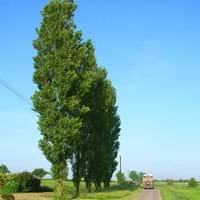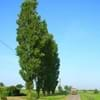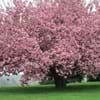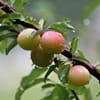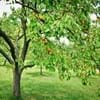Life Span
Perennial
Perennial
Origin
Europe, Northern Africa
Caribbean, South America
Types
Not available
Pinks Mammoth, African Pride, Late Gold, Geffner, Hilary White
Number of Varieties
Not Available
Habitat
Fields, Open areas
Warm and moist climatic conditions
USDA Hardiness Zone
3-9
10-13
Sunset Zone
A3, 1a, 1b, 2a, 2b, 3a, 3b, 4, 5, 6, 7, 8, 9, 10, 11, 14, 15, 16, 17, 18, 19, 20, 21, 22, 23, 24
Not Available
Habit
Narrow Upright/Fastigiate
Upright/Erect
Minimum Width
Not Available
Flower Color
Not Available
Yellow green
Flower Color Modifier
Bicolor
Bicolor
Fruit Color
Not Available
Light Green, Sea Green
Leaf Color in Spring
Green, Yellow green
Light Green
Leaf Color in Summer
Green, Yellow green
Light Green
Leaf Color in Fall
Yellow
Light Green
Leaf Color in Winter
Not Available
Light Green
Leaf Shape
Diamond-shaped
oblong or narrow-lanceolate
Plant Season
Spring, Summer, Fall, Winter
Summer
Sunlight
Full Sun
Full Sun, Partial Sun
Growth Rate
Very Fast
Medium
Type of Soil
Loam, Sand
Loam, Sand
The pH of Soil
Acidic, Neutral, Alkaline
Acidic, Neutral, Alkaline
Soil Drainage
Average
Well drained
Bloom Time
Spring
Early Summer, Summer
Tolerances
Soil Compaction
Drought
Where to Plant?
Ground
Container
How to Plant?
Not Available
Seedlings
Plant Maintenance
Low
Medium
Watering Requirements
Does not require lot of watering, when new, water every week
Do Not over Water, Does not require regular watering
In Summer
Less Watering
Lots of watering
In Spring
Alternate Days
Moderate
In Winter
Average Water
Average Water
Soil pH
Acidic, Neutral, Alkaline
Acidic, Neutral, Alkaline
Soil Type
Loam, Sand
Loam, Sand
Soil Drainage Capacity
Average
Well drained
Sun Exposure
Full Sun
Full Sun, Partial Sun
Pruning
Remove dead branches
Prune young trees into an open vase shape
Fertilizers
Fertilize the soil instead of direct applying, organic fertlizers
Nitrogen
Pests and Diseases
Healthy tree
Anthracnose, Diplodia rot, Leaf spot
Plant Tolerance
Soil Compaction
Drought
Flowers
Insignificant
Insignificant
Flower Petal Number
Not Available
Single
Foliage Texture
Medium
Medium
Foliage Sheen
Glossy
Matte
Attracts
Birds
Fruit Bats
Allergy
Anaphylaxis, Asthma, Hay fever, Runny nose, Watery eyes
Oral Allergy
Aesthetic Uses
Showy Purposes
Not Used For Aesthetic Purpose
Beauty Benefits
Not Available
Promotes Healthy Hair, Promotes healthy skin
Environmental Uses
Agroforestry, Shadow Tree, Windbreak
Air purification
Medicinal Uses
Diaphoretic, Diuretic
Diabetes, Diarrhea
Part of Plant Used
Not Available
Bark, Fruits, Seeds
Other Uses
Economic Purpose, Food for animals, Grown for shade
Used to make hair tonic, Used to promote healthy blood flow during menstruation
Used As Indoor Plant
No
No
Used As Outdoor Plant
Yes
Yes
Garden Design
Feature Plant, Screening / Wind Break, Shade Trees, Street Trees
Fruit / Fruit Tree, Shade Trees, Tropical
Botanical Name
POPULUS Nigra Italica
ANNONA squamosa
Common Name
Lombardy Poplar
Sugar Apple
In German
Lombardei Pappel
Zuckerapfel
In French
peuplier de Lombardie
Sugar Apple
In Spanish
Lombardía álamo
Manzana de azúcar
In Greek
Λομβαρδίας λεύκες
ζάχαρη της Apple
In Portuguese
Lombardia Poplar
Pinha
In Polish
Lombardia Topola
Cukier Jabłko
In Latin
Lombardiae Poplar
Sugar Apple
Phylum
Tracheophyta
Magnoliophyta
Class
Magnoliopsida
Magnoliopsida
Order
Malpighiales
Magnoliales
Family
Salicaceae
Annonaceae
Clade
Angiosperms, Eudicots, Rosids
Angiosperms, Magnoliids
Tribe
Not Available
Abreae
Subfamily
Not Available
Maloideae
Number of Species
Not Available
Not Available
Importance of Lombardy Poplar and Sugar Apple
Want to have the most appropriate plant for your garden? You might want to know the importance of Lombardy Poplar and Sugar Apple. Basically, these two plants vary in many aspects. Compare Lombardy Poplar and Sugar Apple as they differ in many characteristics such as their life, care, benefits, facts, etc. Every gardener must at least have the slightest clue about the plants he wants to plant in his garden. Compare their benefits, which differ in many ways like facts and uses. The medicinal use of Lombardy Poplar is Diaphoretic and Diuretic whereas of Sugar Apple is Diabetes and Diarrhea. Lombardy Poplar has beauty benefits as follows: Not Available while Sugar Apple has beauty benefits as follows: Not Available.
Compare Facts of Lombardy Poplar vs Sugar Apple
How to choose the best garden plant for your garden depending upon its facts? Here garden plant comparison will help you to solve this query. Compare the facts of Lombardy Poplar vs Sugar Apple and know which one to choose. As garden plants have benefits and other uses, allergy is also a major drawback of plants for some people. Allergic reactions of Lombardy Poplar are Anaphylaxis, Asthma, Hay fever, Runny nose and Watery eyes whereas of Sugar Apple have Oral Allergy respectively. Having a fruit bearing plant in your garden can be a plus point of your garden. Lombardy Poplar has no showy fruits and Sugar Apple has no showy fruits. Also Lombardy Poplar is not flowering and Sugar Apple is not flowering . You can compare Lombardy Poplar and Sugar Apple facts and facts of other plants too.
